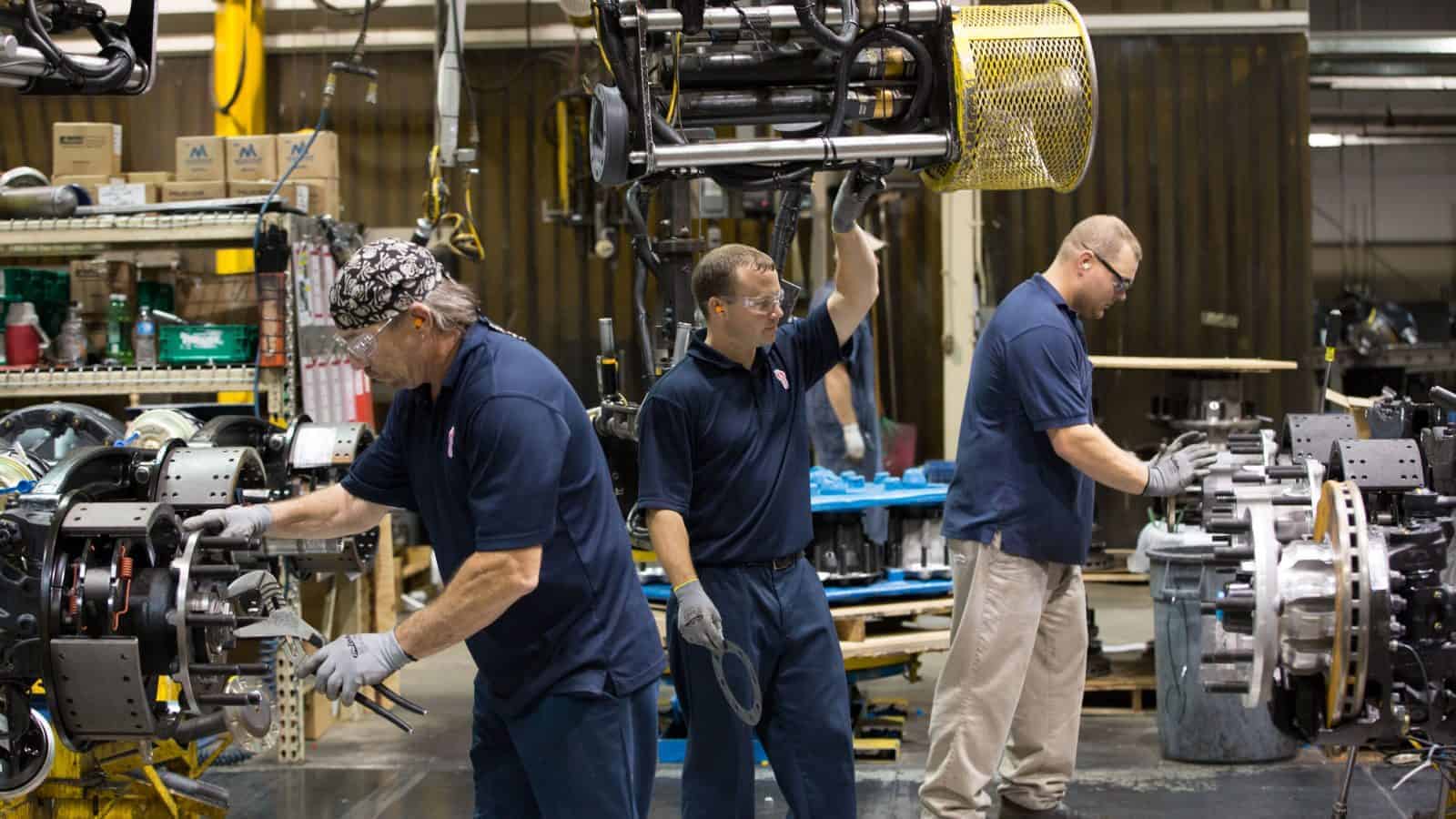Wisconsin Aluminum Foundry Shifts Gears on Retention
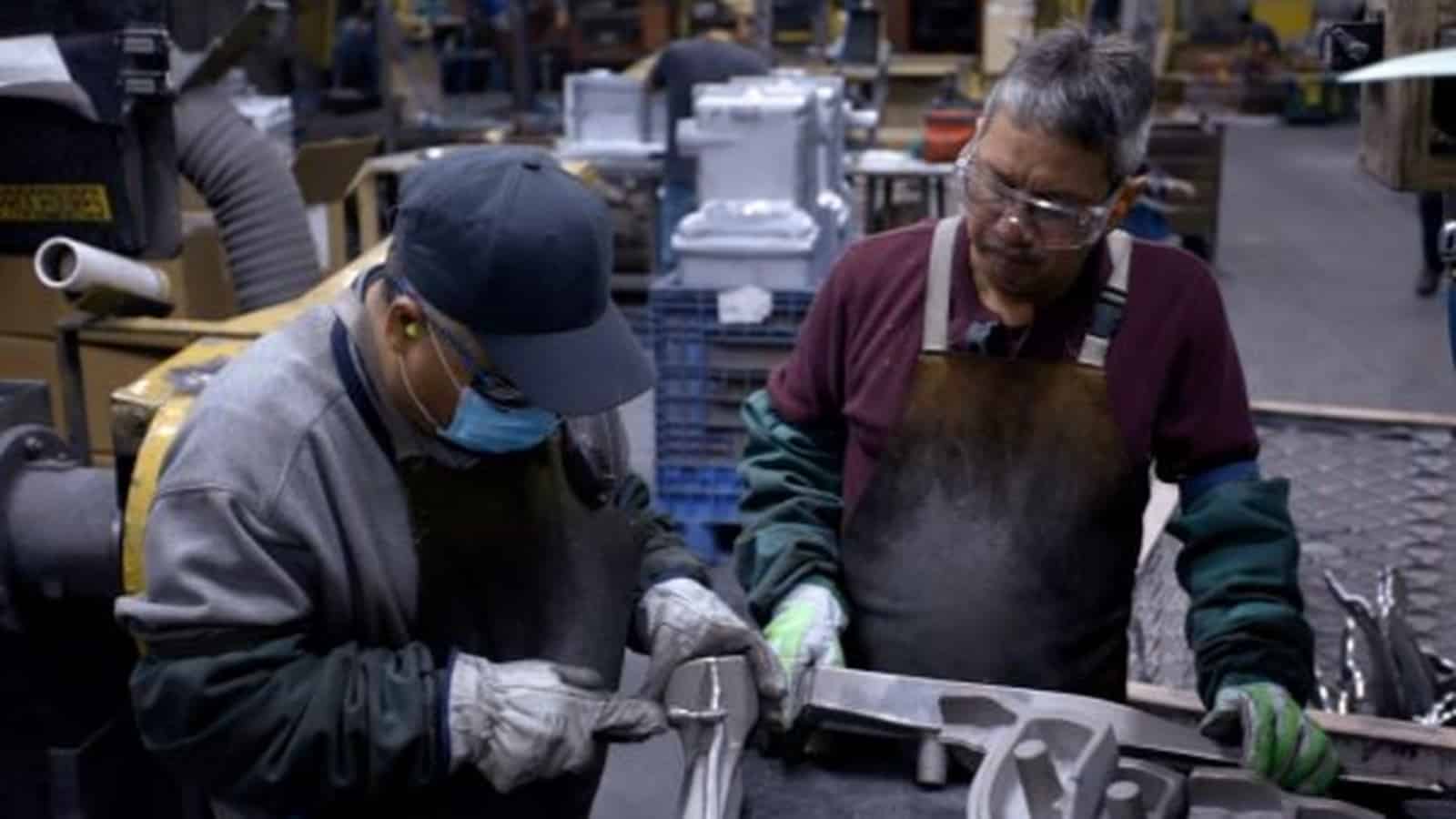
Wisconsin Aluminum Foundry CEO Sachin Shivaram knew something had to change. It was 2021, and at one point that year, the turnover rate of new hires for his foundry’s finishing department reached 100%, hurting its on-time delivery rate to customers.
He was facing a business challenge that many manufacturers consistently cite as their number-one issue: workforce retention, along with recruitment.
Finding a solution: Tackling the issue required looking at all facets of WAF’s operations, including onboarding and training of new hires.
- “What we found was we weren’t giving employees the proper environment to train on a new job,” said Shivaram. “We were putting them on the shop floor and telling them to learn while you work.”
- This finding was underscored by a conversation Shivaram had with one of his employees, who had been with WAF for 25 years.
- “He said when he first joined, he had no idea what he was doing in the first six months,” said Shivaram. “He would clock in and just watched what other people were doing and tried to get by and be productive. He didn’t speak the language and just stuck it out. And I thought to myself, with that sort of confusion among new employees, they will just stop coming.”
Fast Forward grant: Recognizing that WAF needed to train new hires without burdening experienced employees or slowing down its operations, the company applied for a Fast Forward grant through the Wisconsin Department of Workforce Development in October 2021.
- Thanks in large part to the $194,000 it received, WAF created a training center where entry-level employees can learn foundry basics, gain finishing and production skills, improve their understanding of customer specifications and acclimate to the physical demands of the job.
- For employees whose first language is not English, the center provides full-time translators who speak Spanish or Hmong. The foundry also pays for English classes if employees want to take them.
The result? To date, WAF’s new hire turnover rate has dropped from 100% to 15%—an astonishing improvement.
Other benefits: For Shivaram, meeting the company’s retention challenge also means supporting employees “through their career cycle.”
WAF’s starting wage is roughly $25 an hour, plus a $1.25 shift premium. The foundry offers incentive plans, which give employees the opportunity to earn up to 5% additional pay. In addition, WAF pays $400 a month to anyone with young children to offset their expenses for child care—not just for formal day care but any child care expense.
- “We have about 100 parents on that program, and that is huge,” said Shivaram. “People consistently mention to me that is a reason why they stay with us.”
Education: Shivaram notes that for anyone who wants to go back to school, even if it’s not exactly related to their career path, WAF supports that and will pay for part of it.
Feedback: While WAF performs annual employee surveys across all departments to garner feedback, as well as formal check-ins, Shivaram says that informal engagement—whether it’s participating in a company-wide event, such as a golf outing or pizza party, having lunch with an employee or just catching up with someone while walking through the plant—is really what gives him a pulse on the foundry.
- “Informal engagement helps people feel valued because they feel like they have a connection with someone—a friendship even. That is hugely powerful,” he noted.
The last word: The Wisconsin Department of Workforce Development recently recognized WAF for its workforce retention efforts—particularly its retention of minorities and women, who had been underrepresented at the foundry.
- That’s no longer the case, Shivaram pointed out proudly—minorities now make up about 10% of WAF’s workforce, and the foundry now has 40 women on the shop floor.
- “Improved employee retention has had a direct impact on the success of our business and our customers. It’s nice to have someone validate that we’re on the right path,” he concluded.
A New Project Translates Military Experience for Manufacturing Employers
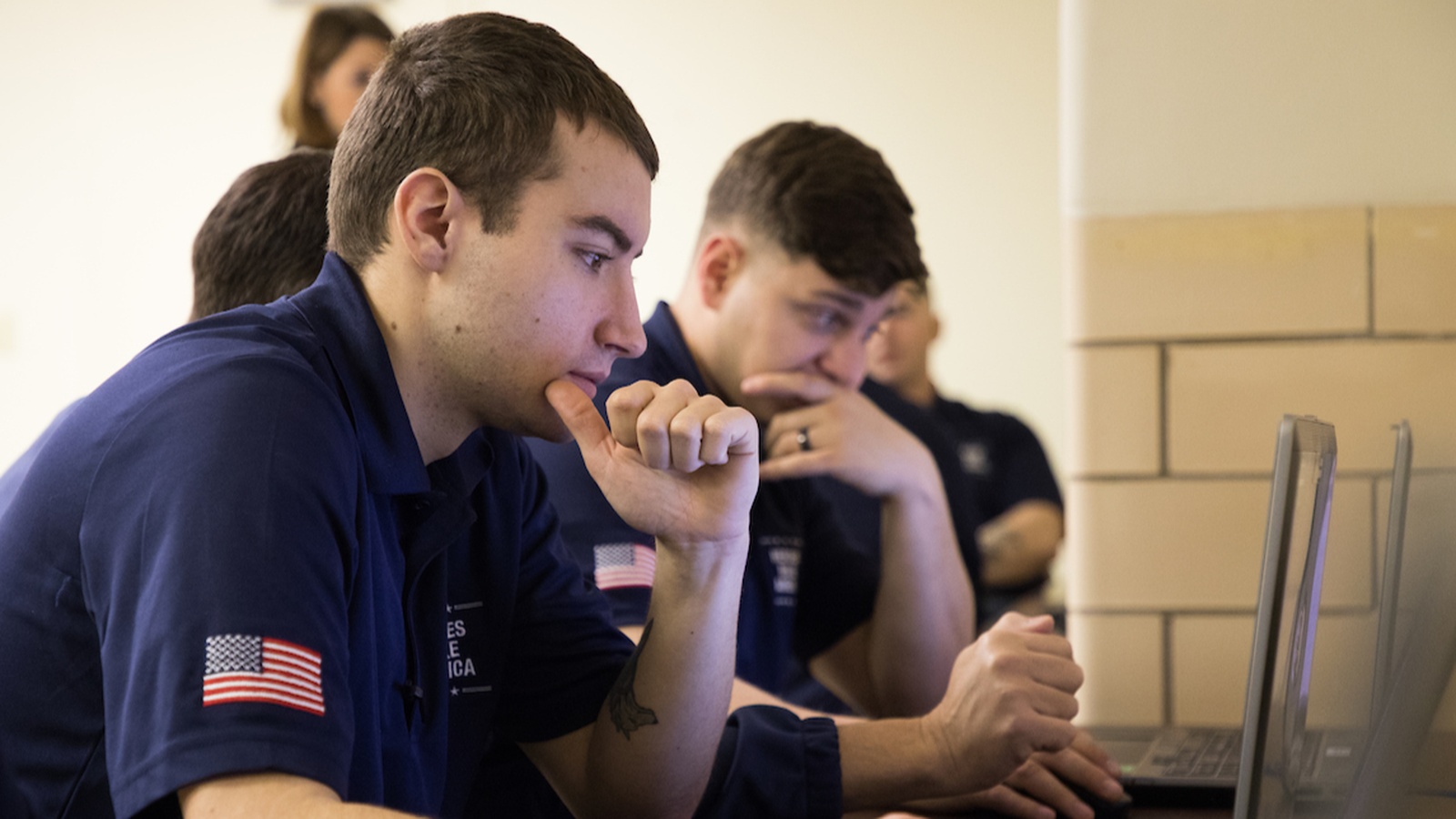
Manufacturers have long sourced great talent from the military community, helping transitioning and former military members apply their skills to America’s most pressing manufacturing challenges.
Through the Manufacturing Readiness Project, the Manufacturing Institute is now making it even easier for military veterans to find excellent civilian careers—and for manufacturers to build an outstanding and talented workforce.
The project: The Manufacturing Readiness Project aims to make military experience comprehensible to civilian employers via a digital credentialing system.
- Military servicemembers are awarded digital badges—stored in digital wallets—based on their military occupation and the training they received, giving both them and future employers a clear way to understand how their military experience prepared them for a career in manufacturing.
The details: The badges include a range of certifications in areas like general safety, general quality and general maintenance.
- Each badge includes a number of additional micro-badges signifying levels and types of achievement. General safety, for example, includes micro-badges in fields like workplace safety, environmental inspections and emergency response.
- These badges are also aligned with more than 300 military occupation codes across all five branches of the military, thereby translating military experience into terms that civilian employers will recognize.
What it means: For the MI, the workforce development and education affiliate of the NAM, this project represents a critical opportunity to expand the military-to-manufacturing pipeline.
- Currently, the MI’s Heroes MAKE America program trains transitioning military personnel in manufacturing skills and works to connect veterans to opportunities in manufacturing.
- The Manufacturing Readiness Project will enhance this effort by providing an avenue for veterans and transitioning personnel to highlight their military experience and enter the MI’s military-to-manufacturing pathway.
Why it matters: This initiative is one of the first of its kind to combine the use of the newest labor market technology tools—Learning & Employment Records, digital badges and digital wallets—to help workers find employment.
- This project is designed to be scalable across military occupations and civilian industries, thus opening the door to a broader range of servicemembers, veterans and employers.
What to expect: The pilot launched on Nov. 13—and within the first few weeks, more than 400 total badges have been awarded to transitioning and former servicemembers.
- So far, the initiative has received vital support from a range of organizations, including Solutions for Information Design, Jobs for the Future, Hire Heroes USA, the Manufacturing Skill Standards Council and Walmart. Following the pilot, the MI looks forward to seeking even more partners across the industry.
Learn more: For more information about the Manufacturing Readiness Project and the MI’s Heroes MAKE America program, please contact [email protected].
A New Project Translates Military Experience for Manufacturing Employers

Manufacturers have long sourced great talent from the military community, helping transitioning and former military members apply their skills to America’s most pressing manufacturing challenges.
Through the Manufacturing Readiness Project, the Manufacturing Institute, the workforce development and education affiliate of the NAM, is making it even easier for military veterans to find excellent civilian careers—and for manufacturers to build an outstanding and talented workforce.
The project: The Manufacturing Readiness Project aims to make military experience comprehensible to civilian employers via a digital credentialing system.
- Military servicemembers are awarded digital badges—stored in digital wallets—based on their military occupation and the training they received, giving both them and future employers a clear way to understand how their military experience prepared them for a job and a career in manufacturing.
The details: The badges include a range of certifications in areas like general safety, general quality and general maintenance.
- Each badge includes a number of additional micro-badges signifying levels and types of achievement. General safety, for example, includes micro-badges in fields like workplace safety, environmental inspections and emergency response.
- These badges are also aligned with more than 300 military occupation codes across all five branches of the military, thereby translating military experience into terms that civilian employers will recognize.
What it means: For the MI, this project represents a critical opportunity to expand the military-to-manufacturing pipeline.
Read the full story here.
How One Manufacturer Is Building a Local Talent Pipeline
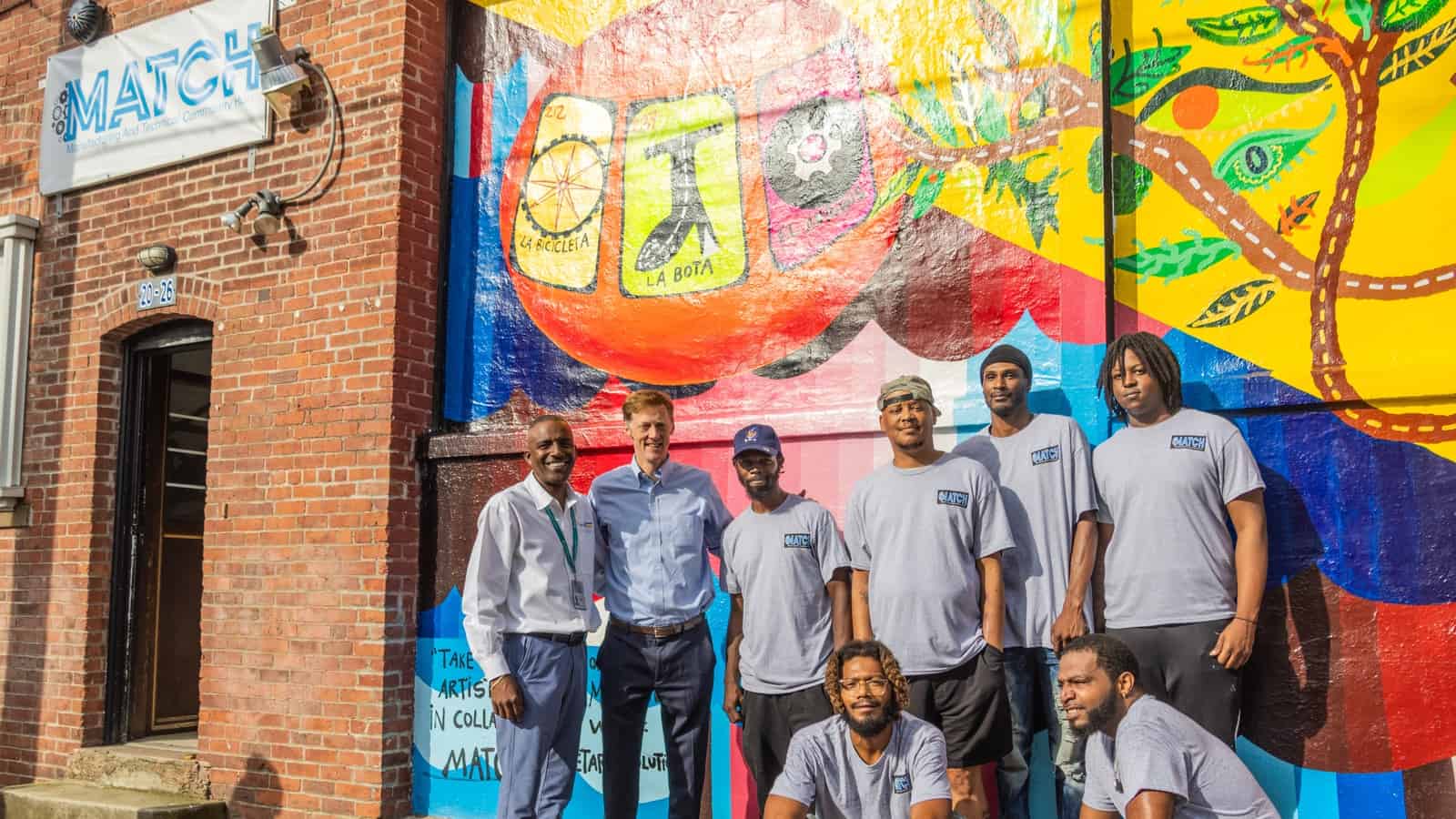
The president of Connecticut-based outdoor lighting manufacturer Penn Globe recently oversaw the launch of a long-awaited passion project: the Manufacturing and Technical Community Hub, or MATCH, a New Haven, Connecticut–area nonprofit contract manufacturing organization and training program designed to fill job openings in the sector.
Seeing a need: “I am a manufacturer, and one of the things I saw missing from the various workforce training programs available was the manufacturers themselves,” LaFemina said. “They weren’t reaching [the participants] in these training programs. So I was a bit frustrated, but that frustration was good … because it led us to create a program with manufacturers training people for actual manufacturing jobs.”
- In 2021, LaFemina and MATCH co-founder Lindy Lee Gold, senior regional manager of the Connecticut Department of Economic and Community Development, secured funding from partners including Lee’s agency, the city of New Haven, the Connecticut Department of Labor and numerous nonprofits.
- This past June, after LaFemina—now MATCH board chair—and the rest of the organization’s board of directors signed a lease on a building, MATCH was born.
How it works: MATCH begins with a two-week, earn-as-you-learn program, offered in both English and Spanish.
- The organization offers training in everything from basic welding to CNC machining, allowing participants to choose the type of manufacturing that interests them most.
- Then, depending on the complexity of their chosen specialty, they may spend up to six additional weeks in paid, on-the-job training before being placed in jobs with local manufacturers.
Meeting the moment: Unlike job-training offerings that expect a certain level of familiarity with an industry, MATCH starts from scratch.
- “Some places say, ‘Let’s test you on something you know nothing about,’” LaFemina told us. “We want to meet the moment. … We’re asking you to come in, give us two weeks and we will pay you minimum wage for the time that you’re here learning.”
- “We’ll figure out what you like and what you’re good at, and as long as we have the workload to make things, you’ll have a job,” she continued.
Being accessible: MATCH also prides itself on seeking out potential employees, instead of waiting to be found.
- “We wanted a building in a specific neighborhood in New Haven,” LaFemina said. “It’s where the majority of the social agencies are, the immigration services, the reentry services. I’d been hearing for two years about how people have [training] programs but couldn’t get participants because [the program locations] were difficult to get to. This one isn’t.”
Family friendly: One of MATCH’s main goals is to reach parents, many of them women, who have left the workforce due to difficulty securing child care. The program’s core hours are 9:00 a.m. to 2:00 p.m., Monday through Friday, in sync with those of most schools.
- MATCH partners are already considering using the program’s New Haven facility as a training site for day care providers, to help alleviate the shortage of workers in that sector.
- In addition, the program’s first cohort of students came from the New Haven Healthy Start’s Fatherhood Involvement project, one of several local initiatives with which the organization has ongoing relationships.
What’s next: MATCH is on track to be financially self-sustaining in three to five years—and LaFemina predicts big growth after that.
- “I see multiple MATCHes down the road,” she said. “There’s already a call for more. My biggest goal is in a few years all of us older people, who leveraged our connections to make this happen, will turn it over to a younger group that will turn it into something even better than it already is.”
Timmons: Justice O’Connor Earned the Respect of a Grateful Nation for a Firm Commitment to Our Constitution, the Rule Of Law and Our American Values of Individual Liberty and Equal Opportunity
Washington, D.C. – National Association of Manufacturers President and CEO Jay Timmons released the following statement on the passing of Supreme Court Justice Sandra Day O’Connor:
“After her ascension to the Supreme Court earned her a place in history, Justice O’Connor earned the respect of a grateful nation for a firm commitment to our Constitution, the rule of law and our American values of individual liberty and equal opportunity. The barrier-breaking first woman on the Supreme Court inspired generations with what President Reagan once described as ‘those unique qualities of temperament, fairness, intellectual capacity and devotion to the public good.’ It was the honor of a lifetime to interview her onstage at an NAM board meeting, and I realized very quickly that you could not sit down with Justice O’Connor without getting a proper grilling in return and being put in your place with a few well-placed zingers. When I asked her to tell us about a difficult case, she quipped, ‘Why would you ask a question like that? They were all difficult, of course, or they wouldn’t have come before the Supreme Court!’
“Justice O’Connor continued her commitment to public service even in retirement, spearheading efforts to strengthen civics education in our schools. As we mourn her passing and celebrate her legacy, the best way to honor her would be to continue advancing her mission. As she once said in a commencement address, ‘If we focus our energies on sharing ideas, finding solutions and using what is right with America to remedy what is wrong with it, we can make a difference.’ Sandra Day O’Connor certainly made a difference that will reverberate through the centuries. Manufacturers extend our deepest condolences to her family and loved ones.”
-NAM-
The National Association of Manufacturers is the largest manufacturing association in the United States, representing small and large manufacturers in every industrial sector and in all 50 states. Manufacturing employs nearly 13 million men and women, contributes $2.91 trillion to the U.S. economy annually and accounts for 53% of private-sector research and development. The NAM is the powerful voice of the manufacturing community and the leading advocate for a policy agenda that helps manufacturers compete in the global economy and create jobs across the United States. For more information about the NAM or to follow us on Twitter and Facebook, please visit www.nam.org.
NAM: Rosalynn Carter Will Be Remembered for a Life of Service
Washington, D.C. – National Association of Manufacturers President and CEO Jay Timmons released the following statement on the passing of former First Lady Rosalynn Carter:
“Rosalynn Carter will be remembered for a life of service—to our country and our world and in particular those who were too easily overlooked. As a First Lady who helped redefine the role, she was a champion for mental health care. And in the more than four decades since her family left the White House and redefined the post-presidency, her leadership at the Carter Center promoted peace and advanced humanitarian causes, including saving lives by eradicating diseases and strengthening democracy through monitoring elections. In Plains, Georgia, she and President Carter, with their trademark warmth and kindness, continued setting an example for all with a partnership that prioritized family and faith. The National Association of Manufacturers extends our condolences to President Carter and to the entire Carter family.”
-NAM-
The National Association of Manufacturers is the largest manufacturing association in the United States, representing small and large manufacturers in every industrial sector and in all 50 states. Manufacturing employs nearly 13 million men and women, contributes $2.91 trillion to the U.S. economy annually and accounts for 53% of private-sector research and development. The NAM is the powerful voice of the manufacturing community and the leading advocate for a policy agenda that helps manufacturers compete in the global economy and create jobs across the United States. For more information about the NAM or to follow us on Twitter and Facebook, please visit www.nam.org.
NAM Bolsters Government Relations Leadership
Washington, D.C. – The National Association of Manufacturers named Stef Webb as its new Managing Vice President of Government Relations. Webb joins the NAM from Gopuff, the fast-growing $15 billion global consumer goods and food delivery company, where she served as director of corporate affairs, helping to establish its federal affairs program and spearhead public and government affairs during key market entries globally.
“Whether she’s bringing together lawmakers and line workers in Midwest manufacturing facilities or building relationships on Capitol Hill or in world capitals, Stef has built a sterling reputation as an effective and collaborative advocate who does not relent until the policies or priorities she’s fighting for are across the finish line,” said NAM President and CEO Jay Timmons.
Reporting to NAM Executive Vice President Erin Streeter and working alongside the organization’s broader advocacy leaders, Managing Vice Presidents Jamie Hennigan (Communications and Public Affairs), Chris Netram (Policy) and Chrys Kefalas (Brand Strategy), Webb will lead the association’s government relations strategy to advance the competitiveness of manufacturers in the United States.
“In this unpredictable and fast-changing political environment, it’s never been more important to have a government relations team that is steps ahead of where the policy opportunities and challenges could go,” said Streeter. “With Stef helping to lead our team, we’ll build on our track record of preparing for tomorrow, anticipating future needs and being a credible and trusted go-to voice and resource for manufacturers and our nation’s leaders.”
Webb brings proven experience in many areas critical to continuing to drive unapparelled results for the industry. She has held leadership roles in government relations, policy, political fundraising, political affairs, communications, membership, finance and operations. Prior to Gopuff, Webb served as director of federal government affairs at NAM member company Anheuser-Busch, showcasing her ability to bridge divides, winning support for key manufacturing priorities in the United States and creating initiatives—like Brew Across America—that brought policymakers together. During this part of her career, Webb’s successful and effective advocacy work first came to the attention of Timmons and Streeter.
“Manufacturing is the backbone of the American economy and the foundation of business in America, impacting nearly every industry and person,” said Webb. “The NAM has built a reputation as the most trusted voice and resource for manufacturers in the United States, and I’m excited to join this team to create an even better environment for manufacturers to compete, to create more jobs and to improve lives.”
Webb also serves her country as an officer in the United States Navy Reserve.
-NAM-
The National Association of Manufacturers is the largest manufacturing association in the United States, representing small and large manufacturers in every industrial sector and in all 50 states. Manufacturing employs nearly 13 million men and women, contributes $2.91 trillion to the U.S. economy annually and accounts for 53% of private-sector research and development. The NAM is the powerful voice of the manufacturing community and the leading advocate for a policy agenda that helps manufacturers compete in the global economy and create jobs across the United States. For more information about the NAM or to follow us on Twitter and Facebook, please visit www.nam.org.
NAM Hosts 2023 Manufacturing Legal Summit
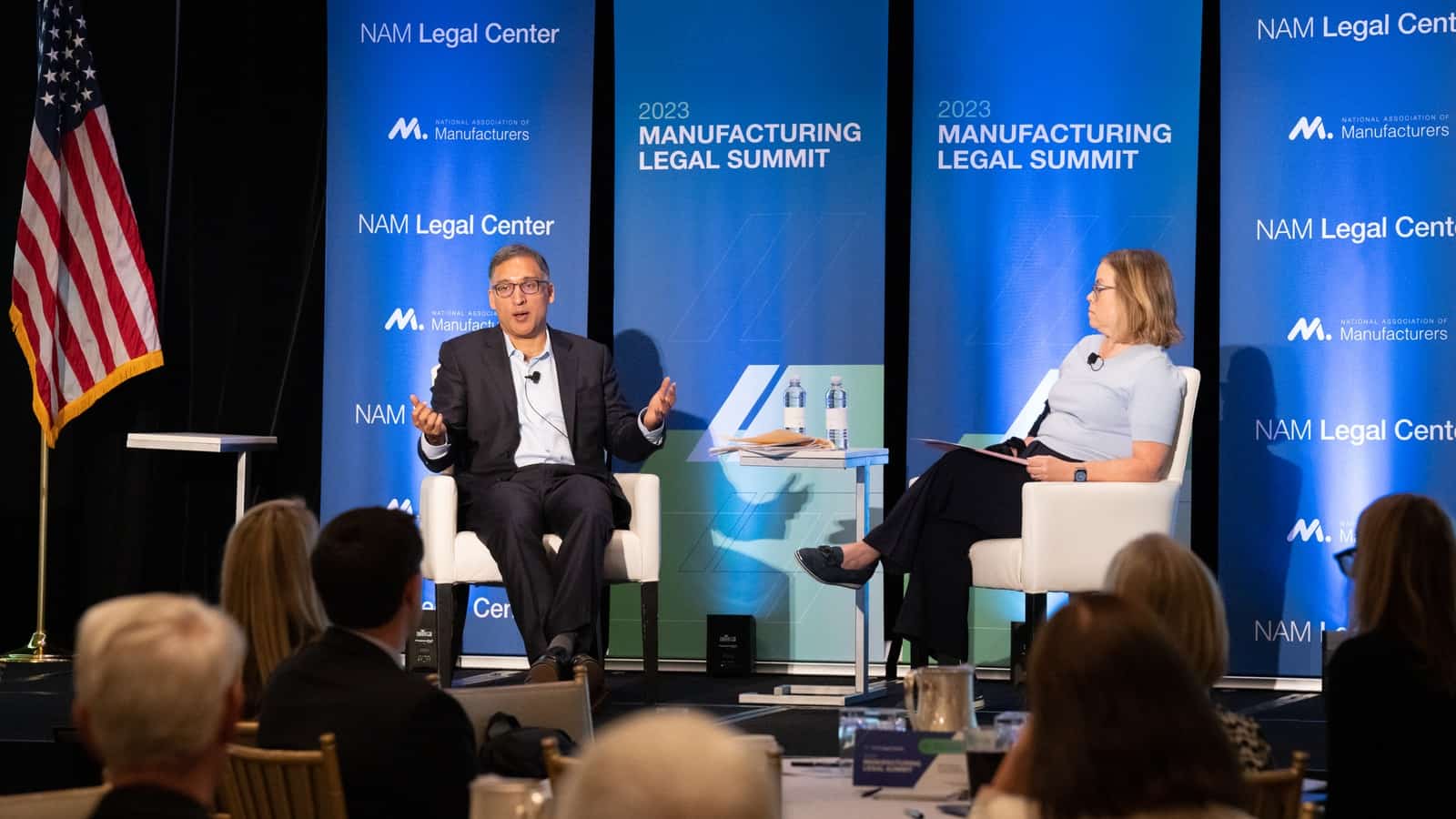
Every day, manufacturers face complex legal and regulatory challenges that can harm their companies’ bottom lines. Too often, in-house legal staff are forced to navigate this difficult and unpredictable climate alone.
That’s where the NAM’s Manufacturing Legal Summit comes in to provide support. Held on Nov. 6–7 in Washington, D.C., the second-annual Legal Summit brought together in-house counsel from manufacturing companies across the nation to share vital information and practical tools to address the ever-changing legal and regulatory landscape.
“From changes in the law to an increase in enforcement actions to an onslaught of new regulations, manufacturers are facing a more complicated legal environment than ever before,” said NAM Deputy General Counsel for Litigation Erica Klenicki. “Our summit offers the kind of practical legal tools manufacturers need to succeed—and a national network of manufacturing peers that doesn’t exist anywhere else.”
Exploring issues: The Legal Summit covered a range of topics, including the following:
- Supply chain integrity: A team of experts from the law firm Foley & Lardner (partners Greg Husisian, Elizabeth Haas and Marcos Carrasco Menchaca) and Aurorium General Counsel Fernanda Beraldi discussed new supply chain integrity requirements, helping participants understand shifting rules and providing practical solutions to identify and manage risks.
- The NLRB: The priorities and actions of the current National Labor Relations Board present a significant pro-labor shift. Fisher Phillips Managing Partners Steve Mitchell and Steve Bernstein offered context and a critical look ahead.
- Data privacy: Husch Blackwell Partner David Stauss laid out the trends and implications of privacy law at the state and federal level.
- Cyber risk: In a presentation from Baldwin Risk Partners National Director of Cyber Product Emily Perry Short, attendees learned about the impact of cyberattacks and regulations—and what manufacturers need to know to keep their businesses safe.
- SCOTUS: A conversation between former Acting Solicitor General of the United States Neal Katyal and NAM Chief Legal Officer Linda Kelly offered a behind-the-scenes look at oral advocacy before the U.S. Supreme Court and laid out the stakes for manufacturers in the Court’s upcoming term.
- Product liability: Participants learned about best practices for navigating adverse events in regulated industries from a panel comprised of former Commissioner of the Consumer Product Safety Commission Joseph Mohorovic, two seasoned products liability attorneys, Steve Karg and Carol Welborn Reisman, and an in-house counsel at GE Appliances, Jeff Sefton.
- Ethics: Tom Spahn, counsel for McGuireWoods, led an interactive program addressing ethical issues for in-house counsel.
Creating a network: In addition to providing practical knowledge and real-world strategies, the Legal Summit offered manufacturing counsel the opportunity to meet one another, exchange ideas and develop a strong network.
- “General counsels offices for manufacturers are spread out across the country, and so rarely have a chance to convene as a group,” said Michael Tilghman, litigation counsel at the NAM. “That’s something that’s very unique to this summit, which is a great opportunity to build supportive networks.”
Making waves: Participants shared positive reactions to the program.
- “The feedback shared by my team was overwhelmingly positive and complimentary of the job your (small, but mighty) team did in putting together the agenda and speakers,” said Jason Brown, vice president, general counsel and secretary of GE Appliances. “Kudos to [the NAM Legal Center] and those behind the scenes that supported you in this effort. It is already on our calendar for next year.”
The last word: “The NAM Legal Center is an incredible resource and an important part of navigating the current climate,” said Klenicki. “I hope that participants come away from this summit not only with new tools and understanding, but with the knowledge and appreciation that the NAM Legal Center has their back.”
How Manufacturers Can Benefit from Military Talent
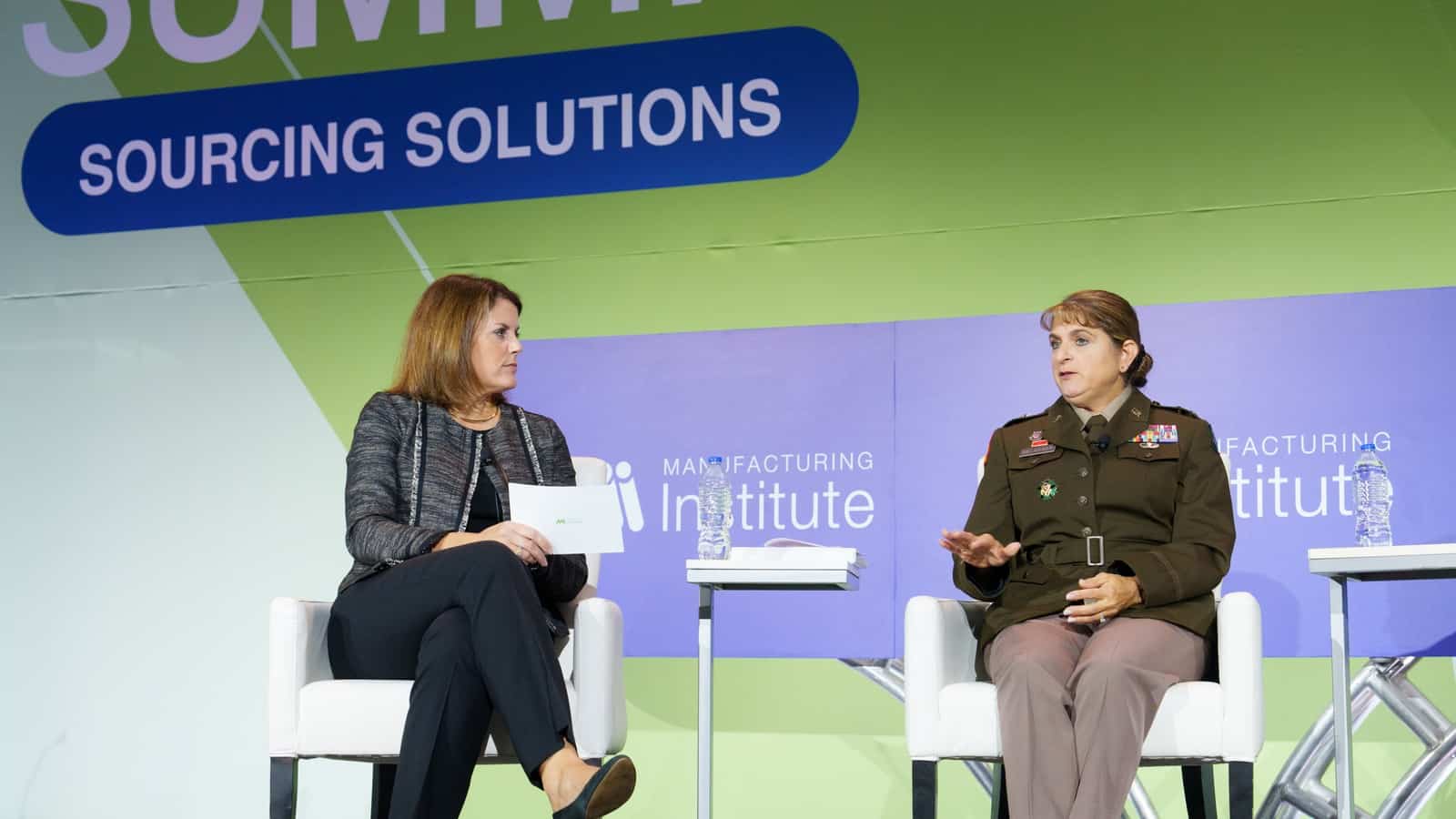
Looking for committed, disciplined employees to add to your workforce? In honor of Veterans Day, we’ll be highlighting how recruiting military talent—whether transitioning service members, veterans, National Guard members, reservists or military spouses—can help manufacturers address structural workforce shortages.
A productive match: At the Manufacturing Institute’s annual Workforce Summit in October, Maj. Gen. Kris A. Belanger, commanding general of the 99th Readiness Division, Army Reserve, spoke about the results manufacturers and military talent can achieve by working together.
- “The military offers diverse talent, very diverse. There are lots of ways that our training, roles and responsibilities overlap with those in manufacturing. Hiring military talent is a win–win situation,” she emphasized.
Making connections: During the “Leveraging Military Talent to Source an Essential Workforce” breakout session, MI National Director of Military and Veterans Initiatives Amy Thomas discussed how manufacturers can widen talent pipelines to include those affiliated with the military.
- “The Heroes MAKE American initiative trains and support military talent as they find a new career that utilizes their military training and experiences,” she said.
- “Since 2018, Heroes MAKE America has issued more than 6,000 industry-recognized certifications, achieved a 90% placement rate among graduates in more than 350 companies in 48 states and has shared information about manufacturing careers with more than 12 million individuals from the greater military community through social media, [Department of Veterans Affairs] newsletters and virtual and in-person industry events,” she continued.
Dive deeper: In addition to the Workforce Summit sessions, the MI held a Solution Series workshop in July to help manufacturers connect with military talent. The workshop offered manufacturers practical, actionable advice.
- For example, manufacturers should make sure the requirements listed in position descriptions are truly required for successful fulfillment of that role’s responsibilities, so that candidates coming from nontraditional backgrounds (such as military service) know they are welcome to apply.
- Companies should also make sure they know what military ranks and designations mean in terms of skills. They can go to the Civilian Leadership Equivalency Handout for guidance.
- For more tips, check out the MI’s Top 10 Solutions to Connect with Military-Affiliated Talent.
The last word: In conversation with Maj. Gen. Belanger, MI President and Executive Director Carolyn Lee noted, “With nearly 200,000 service members transitioning out of the military each year, the MI realized this was an opportunity to tap into that talent pool, teach them about manufacturing and bring them into our industry. That’s what makes our HMA program so exciting. We’re building those connections and providing those solutions.”
Get involved: Interested in learning more? Join the HMA team on Nov. 20 from 3:30 p.m. to 4:30 p.m. EST to learn how manufacturers can get involved in the program and benefit from this talent pool.
NAM Leads Business Community in Urging Restoration of Pro-Growth Tax Policies
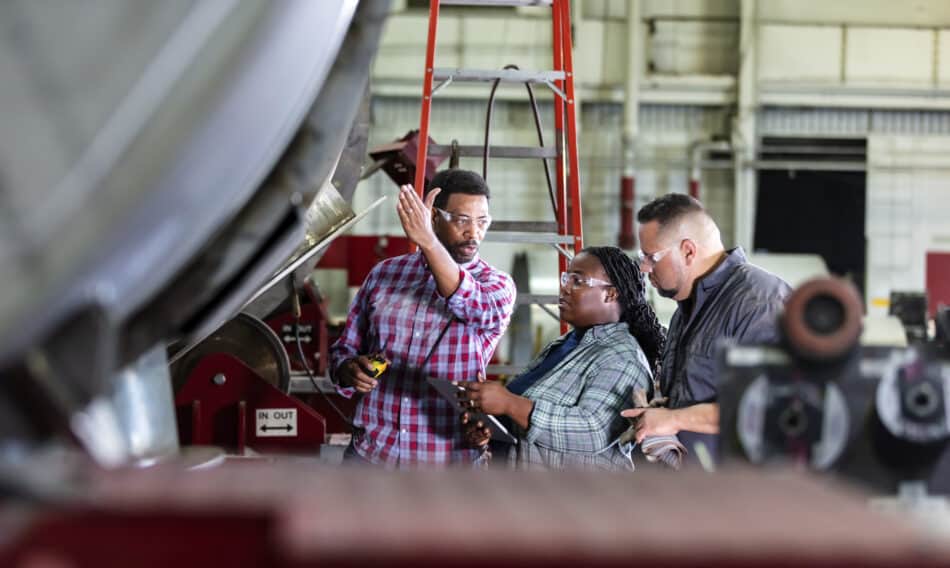
To ensure that manufacturers in the U.S. can continue to create jobs and compete effectively in the global marketplace, Congress should extend three important tax policies, the NAM, along with more than 1,300 businesses and associations, told congressional leadership today.
What needs to be done: The House and Senate must act swiftly to ensure that the tax code supports innovation, enables businesses to finance growth and incentivizes capital equipment purchases.
- On R&D: Allow businesses to once again fully deduct research and development costs in the same year in which they are incurred.
- On interest deductibility: Reverse a stricter interest deductibility limitation that makes it more expensive to undertake job-creating investments.
- On full expensing: Extend 100% accelerated depreciation, which reduces the after-tax cost of capital equipment purchases.
The background: For nearly 70 years, the tax code allowed businesses to immediately deduct their R&D costs. However, beginning in 2022, the tax code began to require businesses to amortize the costs over a period of years.
- In the same year, a stricter interest limitation—which acts as a tax on investment—went into effect. This stricter limitation disproportionately harms manufacturers given their significant capital-intensive investments.
- Finally, full expensing, a critical pro-growth incentive, began to phase down this year and is scheduled to be eliminated completely by 2027.
NAM in the news: Bloomberg Tax and Semafor (both subscription) covered the NAM-led advocacy to Congress.
The last word: “On behalf of the millions of American workers whose jobs depend on a competitive U.S. economy, we urge all members of Congress to work together by year’s end to seamlessly reinstate immediate R&D expensing, restore a pro-growth interest deductibility standard and extend full expensing,” the NAM-led business community told Congress.
“Doing so will secure the U.S. as a global leader in innovation, incentivize job-creating investments and reinforce America’s competitiveness on the world stage.”
